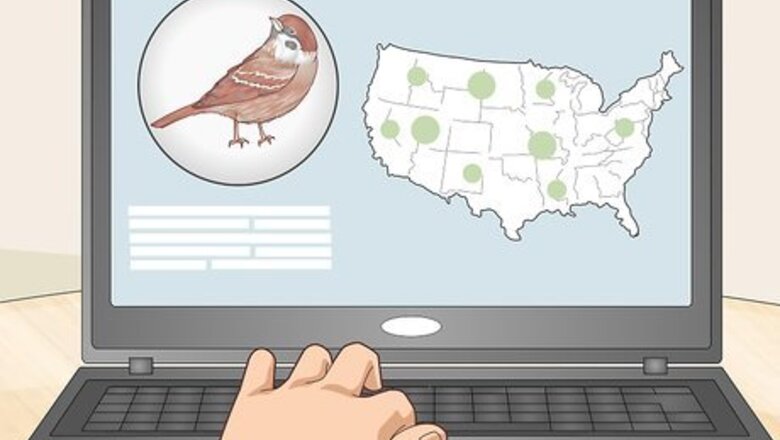
views
Buying the Seed
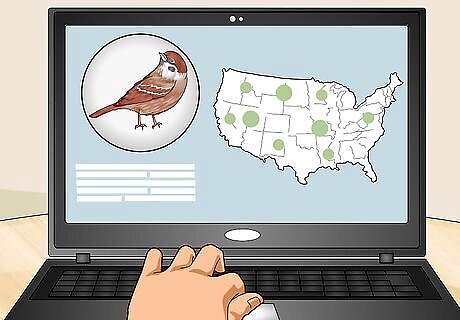
Research the kinds of sparrows that live in your area. Although many sparrows share the same interests relating to types of seed, some species have favorites. Most sparrows enjoy feeding on black oil sunflower seeds while some sparrows, such as the Dark-Eyed Junco, enjoy eating thistle seed as well. Some sparrows like to snack on bugs like aphids, so keep in mind that not only will you help them, but they will also help rid your garden of pests.

Know what kinds of feed are available. There are many different types of feed you can buy. Most birds, including sparrows, enjoy black oil sunflower seed. This seed is widely available and can be found at a fair price. Millet seed and cracked corn are quite cheap and are a good source of nutrients for the sparrows. Thistle seed is a good treat for some sparrows, but it can also be quite expensive. Suet is also liked by sparrows and is high in much-needed protein. When looking for a type of feed, try to find higher-quality food. Usually, the cheapest seed is bad quality and will scarcely be eaten by birds. If you bought seed but found that it was sprouting plants in your yard, you can bake the seed for a short amount of time to make it incapable of germinating.
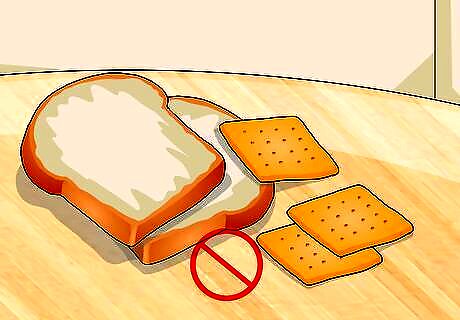
Know what feed is unhealthy for sparrows. Sadly, many people feed birds the wrong kind of feed. You should only put high-quality birdseed in your birdfeeders. Any processed food should not be fed to birds. Crackers, bread, and other carbohydrates should not be fed to birds. Birds should only eat feed high in protein. Never put table scraps out for birds or anything that is considered 'human food'. Some exceptions include peanut butter and other nut-based butter.
Finding the Right Feeder
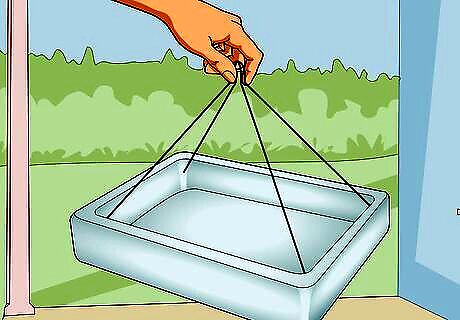
Look for a tray feeder. Sparrows are ground feeders and will not come to a tube feeder. Try to find a feeder that is either a tray feeder that is hung or a feeder that sits on the ground. Feeders that have a canopy over the top of where the birds eat are ideal for harsh weather. Since tray feeders are flat, they can collect a lot of water in them and spoil the seed. Tray feeders made out of plastic are easier to clean out than ones made out of wood. Wood tends to rot and fall apart in wet outdoor conditions.

Clean the feeder regularly. As with most feeders, you should clean them once in a while to prevent birds from getting sick. Since tray feeders can have standing water in them, it's especially important to clean them out after a storm to prevent mold and sickness. Simply use mild soap and water while scrubbing debris from the feeder. Wash all of the soap away and dry the feeder before you put seed in it.
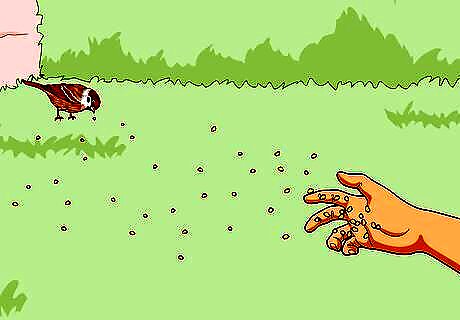
Scatter seeds on the ground. Since sparrows are ground feeders, you can just sprinkle the seed on the ground instead of putting it in a platform feeder. When scattering the feed on the ground, you should use a cheaper kind of seed such as millet or cracked corn. These feeds don't rot as fast as something like black oil sunflower seeds and are much cheaper if some seed is wasted. Sparrows are natural foragers, so it's good to leave some leaf litter on the ground for them to search through.
Changing Your Landscape
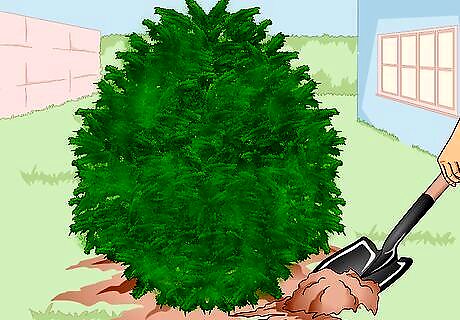
Plant shrubs. Shrubs are very important to the sparrows' life. Sparrows are known to be very skittish, and they have reason to be. They have many predators, some that fly and some that move along the ground. Falcons and cats are two of the biggest bird predators. Planting shrubs can give sparrows much-needed protection from their predators as well as places to build nests and shade from the hot sun. Sparrows also eat berries. If you plant a shrub that also produces berries, then sparrows will not only have protection but they will also have another food source. Make sure that the area where the birds feed is cat-safe. Build a fence to stop cats from catching birds. If you own a cat, make sure that it cannot have access to the birds' feeding area.
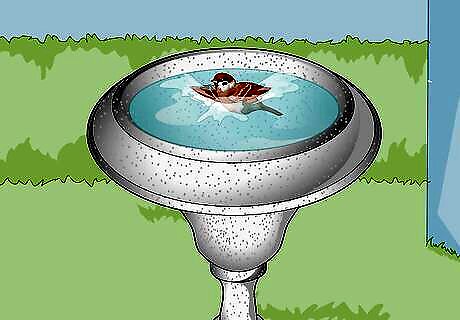
Buy a birdbath. All birds need a source of water, whether for washing themselves off or for getting a drink. Because sparrows like to stay low to the ground, try to find a birdbath that sits on the ground. Place the birdbath by a shrub or bush for added protection. You can buy a heated birdbath to allow birds access to water in colder months. Make sure the birds can hear your birdbath. Sparrows and other birds are more likely to visit a birdbath if they can hear the water in it. You can purchase a solar-powered fountain birdbath or get one that drips. Like feeders, birdbaths need to be cleaned once in a while. Birdbaths can grow algae that could make a bird sick. Sparrows also enjoy dust baths. To make a dust bath, simply loosen the dirt in a spot that gets plenty of sunlight.
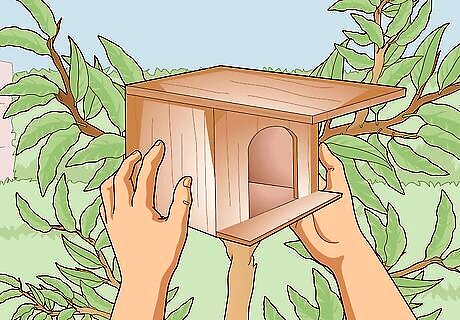
Provide nesting spots. If you make nesting spots, sparrows will more likely stay near your home year-round. Plant trees or shrubs to make a safe spot for sparrows to nest. You can also put birdhouses in trees, but make sure the birdhouses have big enough holes. Provide nesting material around your yard to make it easier for sparrows to built nests. Loose, dry grass or small twigs should be readily available for any bird who wants to build a nest. Try looking up a type of sparrow you see in your yard. You may find information about when and where to put up birdhouses.


















Comments
0 comment